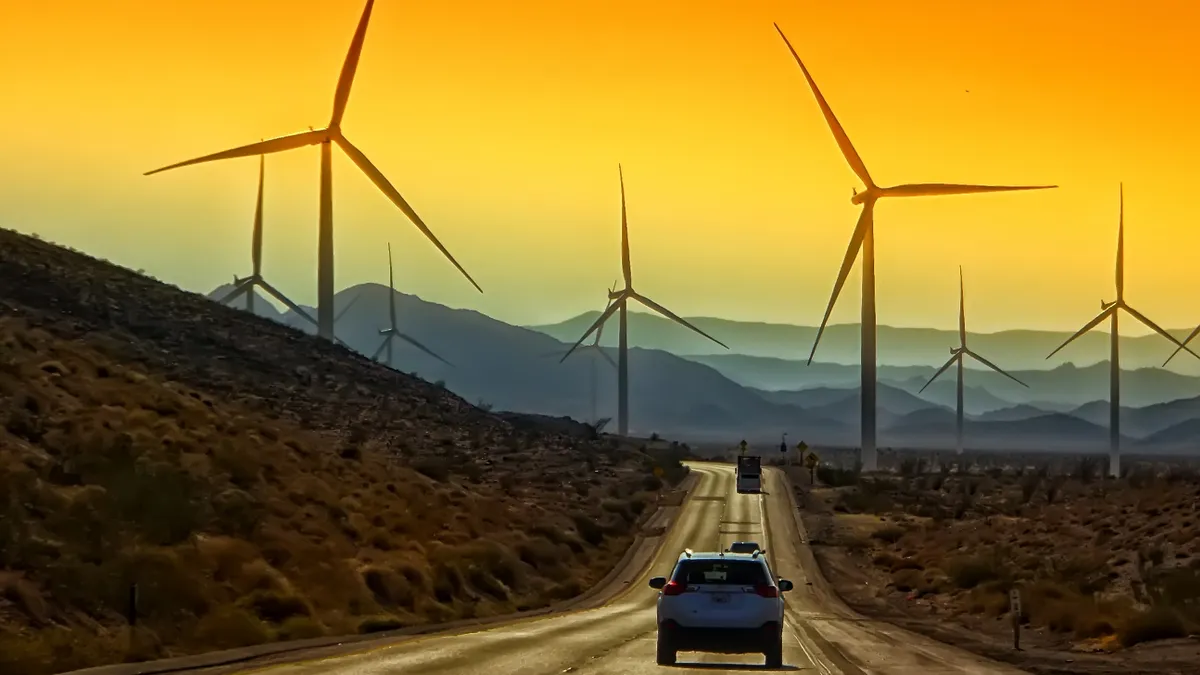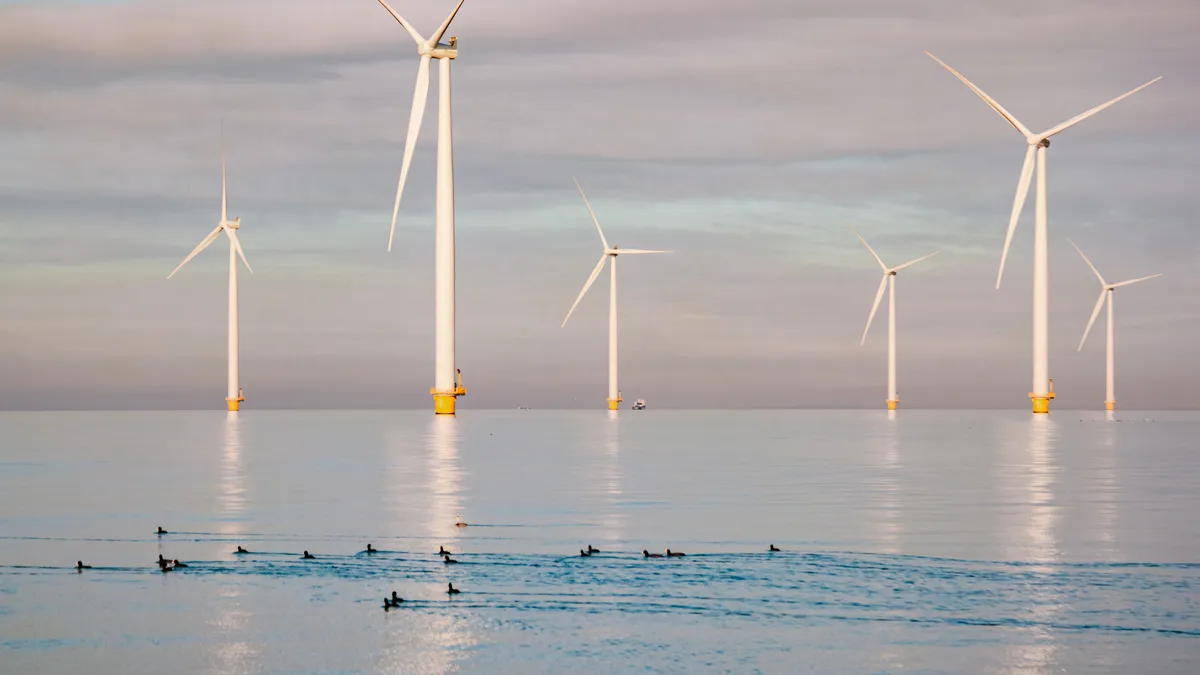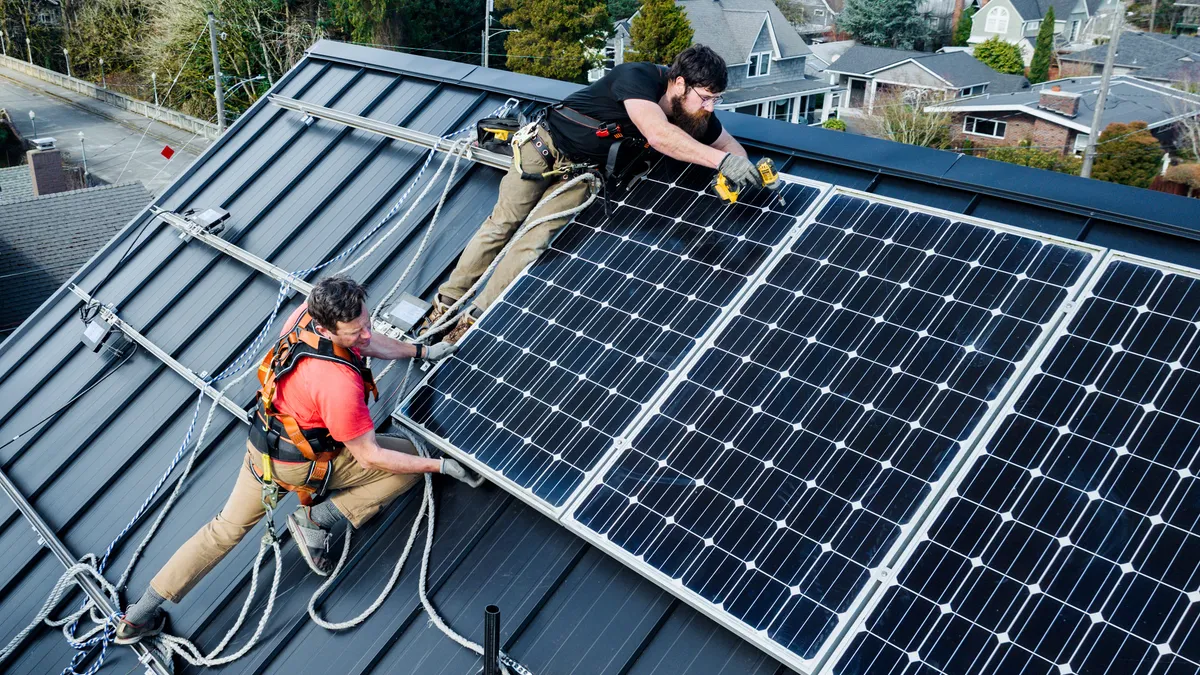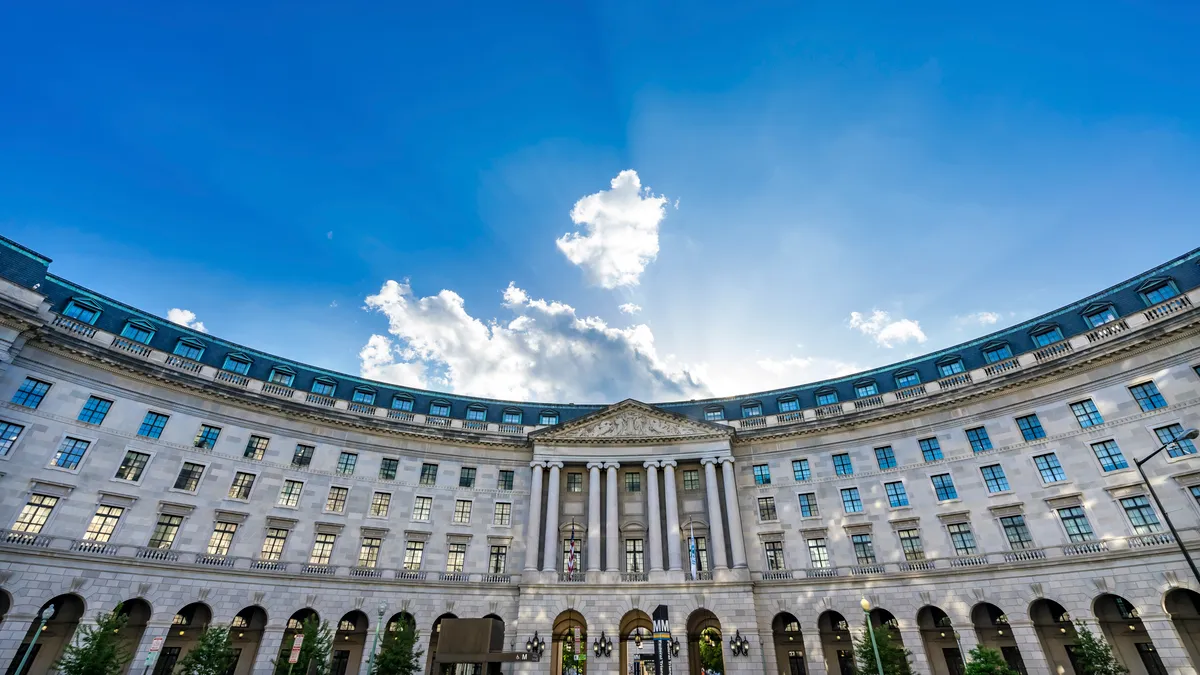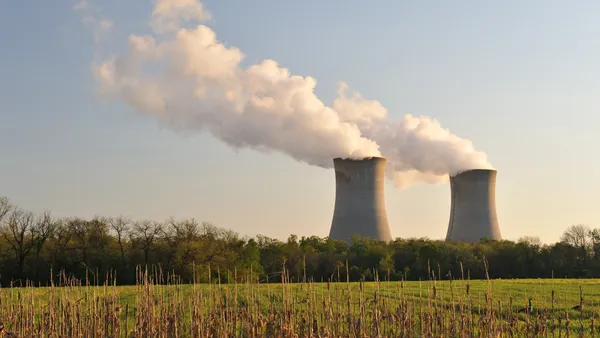The highly anticipated wave of state-level clean energy policy stemming from last fall's midterm elections is just beginning to make its way across the country, aided by a crop of eleven new Democratic governors, seven of which flipped previously Republican seats.
Many governors have already made clean energy policy a priority in their first month, laying the groundwork to continue or begin their state's transition to a cleaner, more efficient electric grid.
"We're seeing a lot of public comments from a number of these governors that indicates that the commitment to clean energy was more than just campaign rhetoric," J.R. Tolbert, managing director at Advanced Energy Economy, told Utility Dive.
"It was actually a commitment to seeing that rhetoric become policy, which is exactly what we were hoping for and what we believed we were seeing from them on the campaign trail."
As the White House continues to push a pro-fossil fuels agenda, many advocates for the clean energy transition have turned their attention to state level policy as a means to address climate change and energy priorities.
A growing number of governors have committed to the Obama-era U.S. goal under the Paris Climate Agreement, which requires states to pursue policies that would reduce carbon emissions 26-28% below 2005 levels by 2025. President Donald Trump in 2017 said he would withdraw the U.S. from the agreement.
Governors of Illinois, Michigan and New Mexico make up the three most recent commitments of the now 20 states allied under the Paris agreement. Those three were also among the seven candidates who shifted their state executive seats blue after running strong clean energy campaigns for the midterm elections.
"New Mexico is different in that the last eight years nothing has happened in the clean energy and climate space except for rollbacks and delay."

Noah Long
Director of Interior West and Northwest Climate and Clean Energy Program, Natural Resources Defense Council
A changing landscape
For the Midwest region and for states like New Mexico and Maine, the new crop of governors is representative of a shift in the regulatory landscape for clean energy, as well as a shift in the way constituencies view the issue.
Traditionally democratic states like California, Colorado, Washington, Oregon and New York have had years of clean energy legislation, which laid the groundwork that new leadership is able to build on, Noah Long, director of the Interior West and Northwest Climate and Clean Energy Program at the Natural Resources Defense Council (NRDC) told Utility Dive.
Colorado Democratic Gov. Jared Polis' first move was to issue an executive order aimed at accelerating electric vehicle adoption in the state, which followed the advanced clean energy agendas of the last two governors, Long said. At the end of last year, the state passed stricter emission standards for vehicles and a 20% renewables standard.
Even in Nevada, under former Republican Gov. Brian Sandoval, the legislature, which was split between a Democratic assembly and a Republican Senate, passed 11 clean energy bills in 2017. That groundwork has allowed newly elected Democratic Gov. Steve Sisolak, to move quickly with a now Democratic-controlled legislature.
"We've already started to see progress on electric vehicles and infrastructure investment for electric vehicles, a real uptake in energy efficiency [and] new commitments to renewable energy, including the passage of the ballot initiatives in November that committed [Nevada] to a 50% renewable energy standard," said Long.
Maine, New Mexico and Wisconsin, on the other hand, are all emerging from less progressive administrations and the table has not yet been set for clean energy.
Wisconsin "probably has the steepest hill to climb to sort of implementing [the governor's] policy vision on clean energy."

J.R. Tolbert
Managing Director, Advanced Energy Economy
In Maine, early attention has concentrated on reexamining former Republican Gov. Paul LePage's "openly hostile" agenda toward renewables, Jeremy Payne, executive director of the Maine Renewable Energy Association, told Utility Dive.
"It's still very early in the session," but movement toward restructuring net metering and eventual conversations around a new renewable portfolio standard, appointing a new commissioner and chair to the Public Utilities Commission and drafting other clean energy legislation are all in the works, according to Payne.
In New Mexico, there has been a lot of action.
"New Mexico is different in that the last eight years nothing has happened in the clean energy and climate space except for rollbacks and delay," said Long. "I think that sets it apart from some of these other states also, and sort of the great need and also the pace with which the government is meeting that need is pretty remarkable."
New Mexico Gov. Michelle Lujan Grisham, D, campaigned heavily on a clean energy platform, even climbing a wind turbine in one of her campaign advertisements.
On Thursday, the state senate introduced a bill that would take New Mexico to 100% carbon-free electricity by 2045. And, in addition to joining the U.S. Climate Alliance, the newly-elected governor put forward a clean energy order directing state agencies to take action on carbon reduction and laying out opportunities for departments to begin examining the infrastructure and transmission corridors necessary to propel renewables forward.
"There's a lot in that executive order," said Long.
"It wasn't just a broad commitment to achieving climate reductions at some future date with some policies unknown, but really laid out a pretty clear roadmap of the kinds of tools that the state would start to work on immediately and that really, I think, sets it as the gold standard for gubernatorial leadership on climate action. ... It's as deep as it is far reaching."
But while New Mexico is seeing a lot of action, Wisconsin "probably has the steepest hill to climb to sort of implementing [the governor's] policy vision on clean energy," said Tolbert.
Democrat Gov. Tony Evers has already expressed his support for renewables in the state, which has seen slower solar and wind adoption, even within the historically coal-reliant Midwest. Both the House and the Senate have a Republican majority in the state, and passed a bill to limit the governor's power during their lame duck session after Evers' election.
"The potential is there" for Wisconsin. "We've got to figure out how to turn that potential into reality."

Tyler Huebner
Executive Director, Renew Wisconsin
"The legislature did everything they could to attack his authority as [Republican] Governor Walker was on his way out," said Tolbert. "I don't know of anything that is direct to clean energy that those bills did, what they do is they put you at a disadvantage of just trying to do your agenda, so I think that's really hard."
The state has also recently drawn criticism from solar developers for third party finance laws that limit private investors' ability to develop and sell solar in the state. An opportunity for clarity on the third party financing law came before the Public Service Commission (PSC) after Evers was able to appoint a new commissioner to the three person PSC.
Though a petition to investigate a proceeding on the issue was shot down 2-1 by the commission, the fact that Evers' appointee voted in favor, indicates a "signal" that the new commissioner would be open to "really diving into the issues to find out really where the lines are between the public utility and the private market," Tyler Huebner, executive director at Renew Wisconsin, told Utility Dive.
"The potential is there" for Wisconsin he said. "We've got to figure out how to turn that potential into reality."
Effective Implementation
Governors have a lot of power when it comes to advancing clean energy in their states, observers agree, and laying the groundwork to accelerate the necessary technology is an important part of their role.
"State governments really need to be definitive in choosing which clean energy sectors and solutions to prioritize," said Robin Millican, program manager of advocacy and government relations at Gates Ventures during the National Association of State Energy Officials (NASEO) 2019 Energy Policy Outlook Conference on Thursday.
"We think it's important to have strategic technology roadmaps, and innovation needs assessments that can indicate to the private sector where investments are going so they can respond appropriately."
While renewable portfolio standards (RPS) set a path for state roads to clean energy, "in many states, they have been left to whither," said Romany Webb, senior fellow and associate research scholar at Columbia Law School's Sabin Center for Climate Change Law.
Some states are seeking to update their RPS, especially as many states have already met their targets, "so they're not driving further renewable energy growth," Webb told Utility Dive.
"It's well recognized that to increase our use of renewable energy we're going to need a dramatic increase in transmission infrastructure, and transmission infrastructure is difficult to build for a range of reasons, including public opposition."

Romany Webb
Senior fellow and associate research scholar, Columbia Law School's Sabin Center
Transmission planning is one piece that's important to effective renewables development, she said, including siting for new transmission lines.
"It's well recognized that to increase our use of renewable energy, we're going to need a dramatic increase in transmission infrastructure, and transmission infrastructure is difficult to build for a range of reasons, including public opposition," said Webb.
Wheels in motion
"Governors are saying the right thing, legislators are starting to put the wheels in motion and we really see what's going on as a positive sign that this has the potential to be a very big year for clean energy, renewable energy, energy efficiency and so on," said Tolbert.
Before the new year, Washington, New York and Washington, D.C. all set 100% clean energy goals within weeks of each other. While no states under new governors have committed to 100% goals yet, a number of candidates ran on platforms promising to make such pledges, including new governors in Maine, Illinois, Nevada and Colorado.
"Nevada hasn't started [its legislative session] but we are fully expecting to see a 100% RPS bill introduced in Nevada," said Tolbert.
While the road to clean energy is less certain for some states, the Midwest is a region on the precipice of joining the clean energy movement more fully under its new governors, say observers.
"[T]here is active negotiation around a comprehensive clean energy package that would aggressively move [Illinois] toward 100% clean energy,"

J.R Tolbert
Managing Director, Advanced Energy Economy
Minnesota on Monday introduced two complimentary bills in the House and Senate that would commit the state to 100% carbon free electricity by 2050. But the state has a split legislature, and representatives of the Republican-majority Senate have already expressed concern about the legislation.
"The challenge, I think, will come for Governor Walz in Minnesota, where if he wants to go bold on clean energy programs it's probably going to be more of a challenge because he's got to walk a tighter rope to get things through the state senate there," said Tolbert.
Illinois Democratic Gov. J.B. Pritzker made commitments to put his state on that path as well, and "there is active negotiation around a comprehensive clean energy package that would aggressively move the state toward 100% clean energy," said Tolbert.
"This is a pivotal moment in time for the region," Samantha Williams, director of the NRDC's Climate and Clean Energy Program for the Midwest, told Utility Dive.
These are "critical opportunities to not only make up for lost time in the Midwest, where we have been historically dominated by coal-fired power but to also start lifting up these new governors and the great lakes region as a place that's going to be critical to winning the battle against climate change at the national level."



